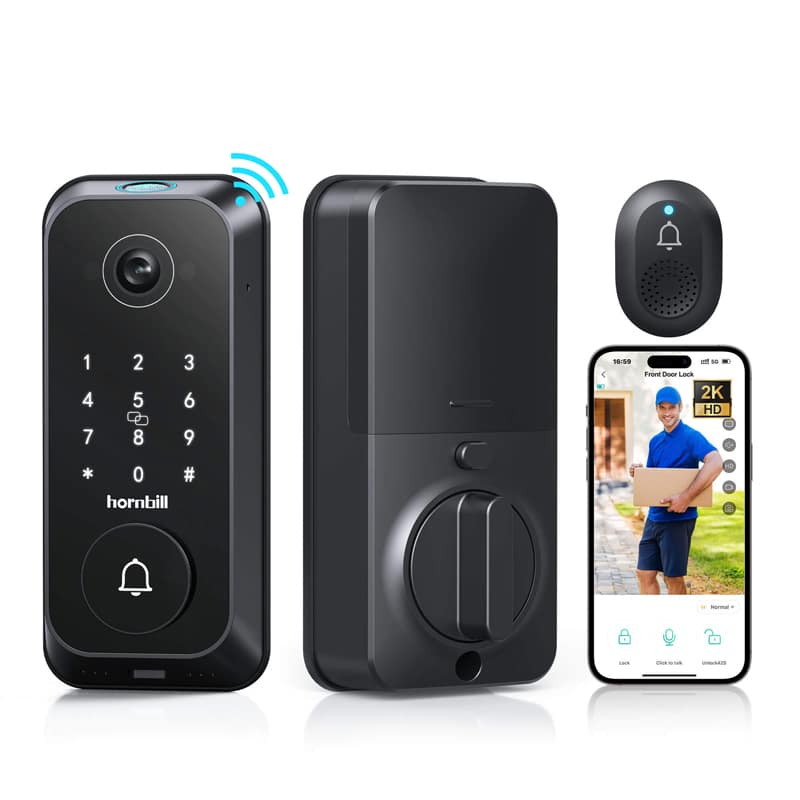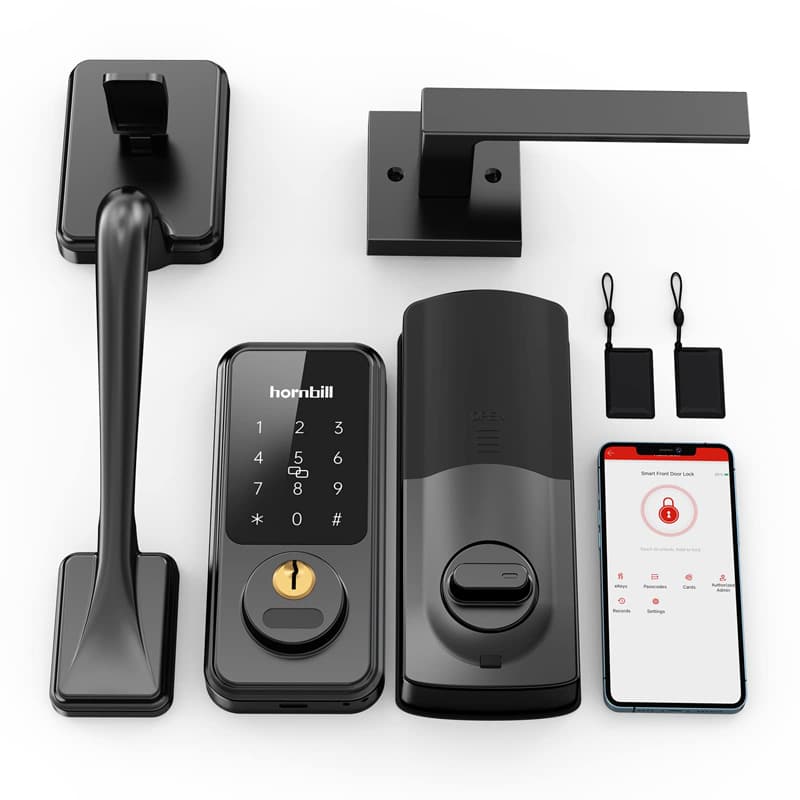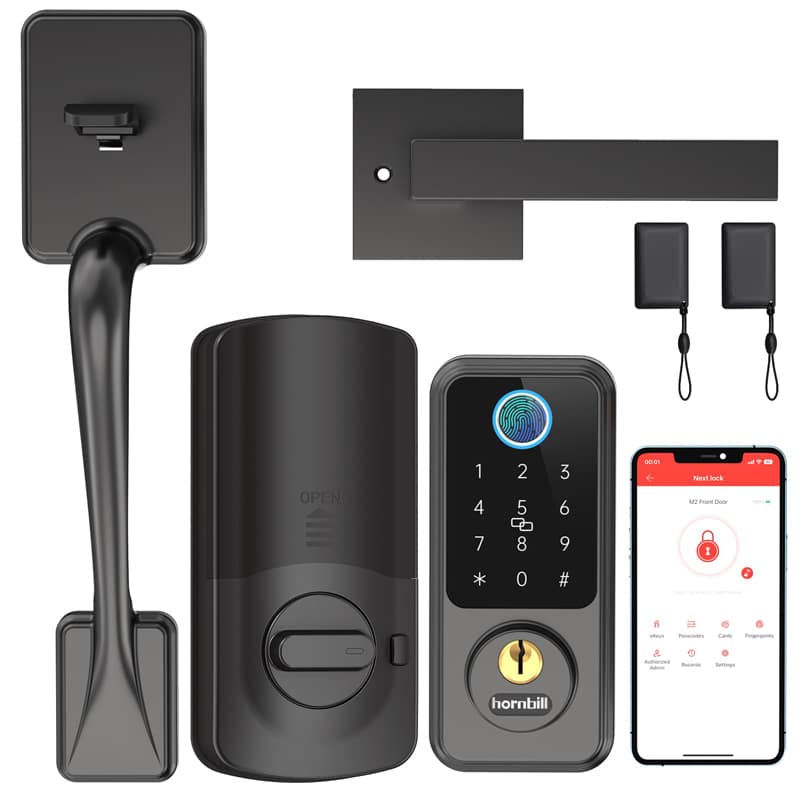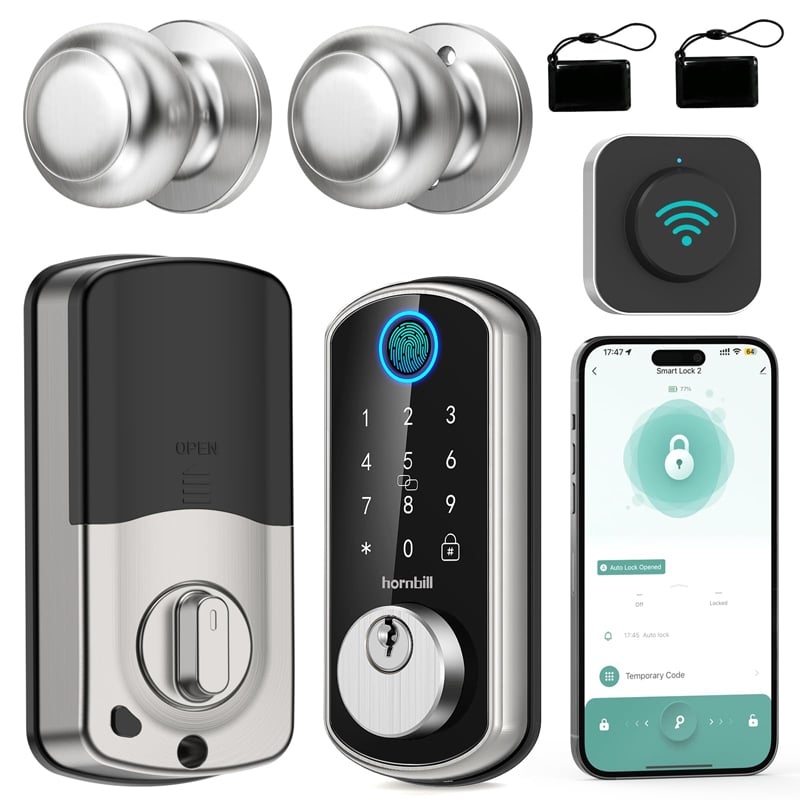In today’s fast-paced world, security and convenience need to go hand in hand, especially when it comes to keeping your home safe. Traditional keys are becoming a thing of the past as keyless entry door lock with app continue to rise in popularity. Hornbill’s smart locks are one of the solutions leading this trend, offering home and business owners a modern and secure way to access their doors. Let’s take a deeper dive into how keyless entry systems work, their benefits, and why Hornbill’s smart locks are the ideal choice for your home security needs.
What Is a Keyless Entry Door Lock With App?
At its core, a keyless entry door lock with app allows you to unlock your door without needing a physical key. By utilizing Bluetooth, Wi-Fi, or even biometric technology, these locks give you the flexibility to control your door from your smartphone. No more scrambling for keys—just tap on your phone and you’re in. The integration of these smart locks with apps allows for remote control, enabling you to lock and unlock your door from anywhere, whether you’re in another room, out running errands, or even on vacation.
For Hornbill smart locks, the app provides seamless access and control, with features that ensure your home stays secure while providing added convenience. Whether you’re using the app to unlock the door for a visitor or checking the lock status while you’re away, this technology puts home security at your fingertips.
Key Features of Hornbill Smart Locks
Convenience Without Compromise
One of the biggest advantages of Hornbill smart locks is the ease they bring to your daily life. Imagine not needing to carry keys anymore, simply unlocking your door from your phone with a single tap. Whether your hands are full with groceries or you’re returning from a run, the keyless entry system ensures you never have to fumble for a key again.
Enhanced Security at Your Doorstep
While traditional locks can be easily bypassed, Hornbill smart locks are designed with enhanced security. Using encrypted connections and two-factor authentication (in some models), they provide a robust barrier against unauthorized access. Plus, features like real-time alerts ensure you’re immediately notified whenever your door is unlocked or accessed, giving you peace of mind that you’re always in the loop.
Customizable Access and Control
The Hornbill app gives you total control over who has access to your home. You can easily generate temporary codes for guests, family, or service providers, giving them access when needed without the hassle of physical keys. The ability to create multiple user codes means you can tailor access for each person, providing both security and convenience.
Why Choose Hornbill Smart Locks?
Seamless Integration With Your Smart Home
Hornbill smart locks do more than just secure your door—they integrate smoothly into your existing smart home system. Whether it’s syncing with your Google Home or Alexa, these locks can become a central part of your home automation, allowing you to control your locks along with other devices such as lights, cameras, or thermostats. This connectivity adds another layer of security while keeping things incredibly convenient.
Affordable and Accessible
While the latest smart technology often comes at a premium price, Hornbill smart locks are designed to offer cutting-edge security features without breaking the bank. You can get the best smart lock that provides both top-tier functionality and value, making it a smart investment for any homeowner.
Reliable and Long-lasting
Durability is key, and Hornbill smart locks are built to last. They are designed to withstand various weather conditions, so you don’t have to worry about your lock failing due to the elements. Whether it’s rain, snow, or intense sun, these locks keep working as expected.
Conclusion
In today’s world, upgrading to a keyless entry door lock with app is one of the smartest choices you can make for your home. Hornbill’s smart locks offer unmatched convenience, robust security, and full control, all from your smartphone. With features like remote access, customizable user codes, and seamless smart home integration, Hornbill is revolutionizing the way we secure our homes.
Say goodbye to the days of fumbling for keys and hello to the future of home security. Choose Hornbill smart locks today for a smarter, more secure, and hassle-free home.










